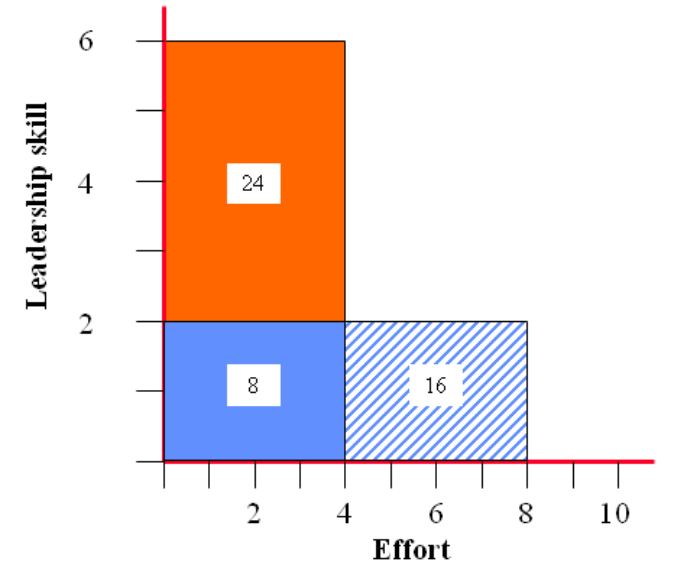Leadership and effectiveness
Leadership and effectiveness
Effectiveness is linked to leadership
In order to achieve anything you must have a process or method that is effective. We all know that certain people appear to be more effective than others in ‘getting things done’. You will only be as effective as the leadership qualities that you possess. If you gauge your level of effectiveness at a value of say 80% for a particular level of leadership qualities then if they are halved your effectiveness level is likely to drop to 40% etc.
In simple terms, tackling the same 10 projects, a good leader may be successful in 8 out of 10. Another leader, with half the qualities of the first, may only achieve a 4 out of 10 success rate.
If you are able to rank your leadership abilities on a scale of 1 to 10 and you are, say 7, you can never achieve at levels that require a higher level of effectiveness.
If you are the leader of a team and it is ineffective, what might be the cause?
If the inefficiency is due to one or two people then you can do something about it.
If the inefficiency has spread like a canker then you are to blame.
You will either need to improve your leadership skills or the team will get a new leader.
Simple levels
Born
This leader is often born with a strong ability to lead.
They are often exposed to strong leadership models throughout their lives which is reinforced with training.
They have self confidence based on experience and success and the self discipline needed to implement their leadership skills.
Taught
Similar to the above this leader has been exposed to leadership experience, is self disciplined and has sought training to improve his or her leadership skills to the full.
Latent
This person may have the self discipline and the willingness to train but has not been exposed to many role models in terms of leadership.
Undeveloped
This person may well want to become a leader but has had little opportunity in terms of seeing leadership role models and the opportunity to train [see Leadership training].
Effort and leadership
We know that we can improve our effectiveness just by putting in some more effort. Some improvement in project control could come by spending more time reviewing issues in a timely manner, for instance.
However, extra effort has a price. This may show itself in a variety of ways:
- Extra time being used which may lead to other detrimental problems like stress from becoming a workaholic.
- Wasting your time by checking on the progress of others unnecessarily.
- Unnecessary expenditure to support poor practices etc.
Time management techniques may be lacking.
In terms of the simple graph above ‘effectiveness’ can be considered as the area within boundaries defined by the level of ‘leadership skills’ and the ‘effort’ applied.
At a leadership level of 2 and an effort level of 4 the effectiveness could be defined as an area of 8. A doubling of the effort will improve effectiveness accordingly but at a price as referred to above, as shown by the total blue area 16.
However, if you apply yourself and are able to improve your leadership skills by a factor of 3 your effectiveness will treble as shown by the area 24.
The point is, it is easier to improve your leadership skills which, having been gained, are continually available.
In the case of effort you have to put this in all the time and maintain this to achieve the higher results.
Eventually, the bubble will burst with potential problems for personal well being.
It is clear, that rather than applying more effort (which is commendable in the short term) the preferred option is to improve leadership skills to attain greater effectiveness.
Change the leader
When effectiveness is brought into question a person, team or organisation will often call for help to improve.
Unfortunately, the primary cause of poor effectiveness will usually be the leader.
The leader is often removed and replaced.
Don’t let this happen to you.
There are other ways to improve effectiveness without removing the leader.



